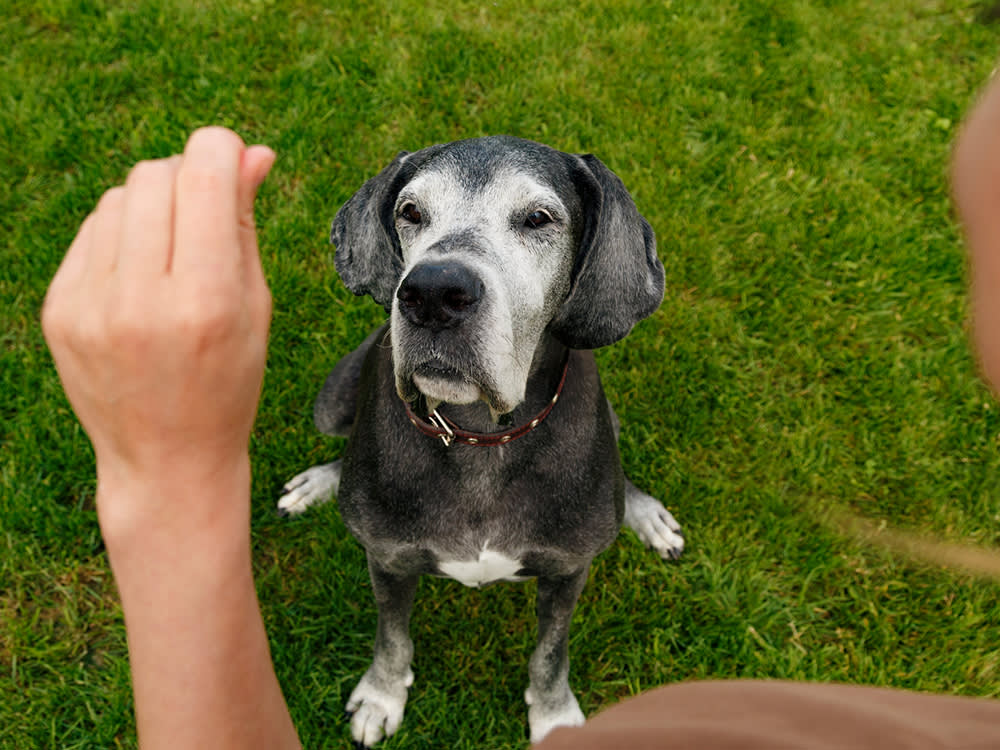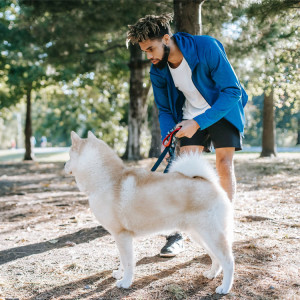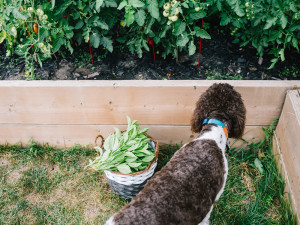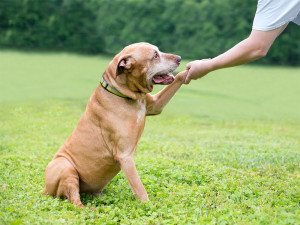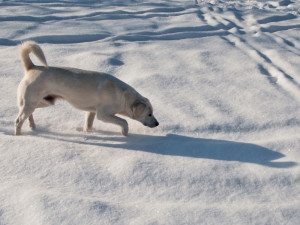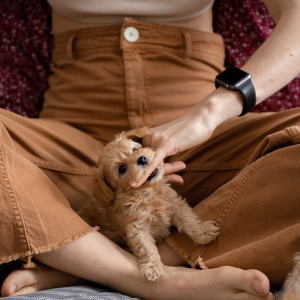Are You Making These Common Dog Training Mistakes?
Pro Karen London, PhD shares the most common dog training errors and how to correct themz
It’s easy to assume that you know how to train your pup effectively, especially when you’re seeing some progress. However, even the best pet parents make mistakes when dog training. Some blunders are only minor hiccups in your life-long dog training adventure, while others can cause a significant setback, putting you and your dog at square one. Here are nine dog training mistakes you should learn to avoid.
1. Making training sessions too long
Multiple short training sessions are better than one long one, but many novice trainers don’t realise that when trainers say “short sessions”, they mean 30 to 90 seconds, not 20 minutes or more. You might be surprised to learn this because dog training classes are often 45 to 60 minutes long. However, that class standard reflects logistics and convenience – nobody could (or would) come to a training centre multiple times a day – so trainers meet in longer group classes. The term “micro-sessions” is more appropriate than “short sessions”.
2. Delivering treats too slowly
You ask your dog to lie down and they do, but by the time you give them a treat, they’re jumping up towards your face. What do they think earned them that treat? Jumping up at you. Similarly, if you call your dog to come and they head right to you and sit, they may think sitting in front of you is the behaviour you’re so pleased about. Sitting is a lovely behaviour, but if you’re working on their recall, you want to make sure it’s clear to them that coming when called is the behaviour you want.
There are two ways to solve these sorts of problems, and both involve timing. Focus on delivering the treat immediately after the behaviour you like (lying down, coming to you) and before your dog has time to throw another behaviour (jumping up, sitting in front of you). Or use a marker, such as a clicker or the word “yes”, at the exact moment your dog does what you want. Either of these will tell them what they did to earn that treat.
3. Misplacing treat delivery
For example, when working on heeling, it’s better to deliver treats with the hand that’s on the same side as your dog, so they don’t need to cross in front of you (and get out of position) to get it. Also, when learning proper stationing behaviour, it’s common for dogs to be a little pushy in their enthusiasm to reach the treats, or even the treat bag. By aiming a bit below or behind their mouth, you will encourage your dog to back up and to learn that this is the spot where good things are delivered. Follow the general rule of delivering the treat where you want your dog to be.
4. Punishing desirable behaviour
When I say it’s a common mistake to punish behaviour we like, I’m not talking about those who are, sadly, still using physical punishment to train dogs. But even well-intentioned trainers who use positive reinforcement and have no intention of punishing a dog commit this faux pas. Any time the consequence of a behaviour is something a dog doesn’t like, the behaviour is less likely to happen again. Technically, this is called “positive punishment” as distinguished from “negative punishment” – or removing something good as a consequence of a behaviour. Both types of punishment reduce the frequency of the behaviour they follow.
Here’s a common scenario: People commonly call their dogs to come, then subject them to something they don’t like, such as nail trims or baths. Another is patting a dog on the head after they respond to a cue; most dogs don’t care to be patted on the head. Besides making the dog less likely to perform the good behaviour (say, coming when called) in the future, you may actually be “poisoning” the cue. That means that you’re teaching the dog to associate a cue (“come”) with something unpleasant. This is also common with the cue “drop it”, which many dogs have learned to associate with having things taken away from them. Always make sure that the consequence of a behaviour you want to keep seeing is something that the dog enjoys.
5. Reinforcing unwanted behaviour
It’s all too easy to allow a dog’s unfortunate behaviour to work for them. One example of this is allowing a dog to pull while on the lead; the behaviour is reinforced because it gets them what they want – going the direction they desire, going faster or catching up with that cat. Or, reinforcing barking by giving the dog attention in response to it. Similarly, laughing, stroking or sweet-talking a dog when they jump up makes that behaviour more likely to happen. Don’t let the behaviour you don’t want work for your dog, or they will keep doing it.
6. Failing to teach a dog to generalise
Asking for a behaviour that’s too hard for a dog at a particular moment is a very common training mistake: “I don’t know why they’re not doing it. I know they know it!” The behaviour in question is almost always something that many dogs are taught, such as sit, down, stay or come.
The thing is, even though many dogs are taught to do these behaviours, they’re not always taught to do them in a fully fluent, generalised way. This means that even though a dog responds to a cue in a familiar environment, they may not be able to do so in other locations or situations. A dog who can lie down at home may not be able to do so while on a walk or when visitors come over. They may come when called in the garden but not at the park.
This is completely normal and to be expected, but not everybody knows this, so they ask for a behaviour in a new context without understanding that dogs have to learn to generalise their skills to new situations and higher levels of distraction.
A lot of training is not about teaching a dog to perform a behaviour on cue, but rather, teaching a dog to be able to perform that behaviour on cue regardless of where they are or what’s going on around them. It’s critical to adjust your expectations based on the situation and the level of distraction as you work on teaching your dog to generalise what they know.
7. Using only treats as a reinforcement
Treats are wonderful for training because they are so reinforcing to most dogs. I use treats a lot and think being generous with them is an important part of productive and happy training sessions. However, the use of other types of reinforcement can be a very powerful addition to training. Physical contact the dog enjoys, new toys, a play session or getting to go outside can expand your dog’s willingness to work and help you do a better job of teaching them. Yes, treats are a great reinforcer and by far the most commonly used by almost all trainers, but using only treats limits the potential effectiveness and fun of training.
8. Being inconsistent with cues
Training always benefits from clear communication. In training dogs, you face a challenge that’s super-obvious but often overlooked: communicating across species. That’s hard, and the potential for confusion is ever-present. Simply being consistent with cues goes a long way toward alleviating problems that come from misunderstandings.
If your cue for a recall is “come”, use that exact word every time. Don’t change it up by saying “c’mere” or “c’mon”. Similarly, if your cue to stay involves holding up your hand with your fingers spread and open palm facing them, it’s not fair to expect them to know that’s what you mean when you give the cue while holding your car keys. That’s confusing to dogs, but people do it all the time, leading to frustration on the part of both person and dog.
9. Bribing instead of reinforcing
Reinforcement is a desirable consequence of a behaviour that makes that behaviour more likely to happen in the future. It’s a fundamental part of dog training. Bribery, on the other hand, is a promise of something good if a behaviour is performed. Dangling a treat to get a dog to do what you want is bribery and often results in a dog who will only do what’s asked if they’re shown the goods upfront.
An especially problematic but common error is to ask a dog to do something, such as give a high-five, then when they don’t do it, pull out a treat and give the high-five cue again. When the dog responds, they get the treat. This practice results in a dog who will only offer the behaviour if they see the reward. The difference between reinforcement and bribery is huge; only the former will lead to a well-trained dog.
These common training mistakes can make training more challenging for both you and your dog, but the good news is that changing just a few details can make a huge difference in your dog’s behaviour and in the joy you share during training. The result is that the relationship between the two of you becomes even better, and that’s the best possible outcome of great training.
